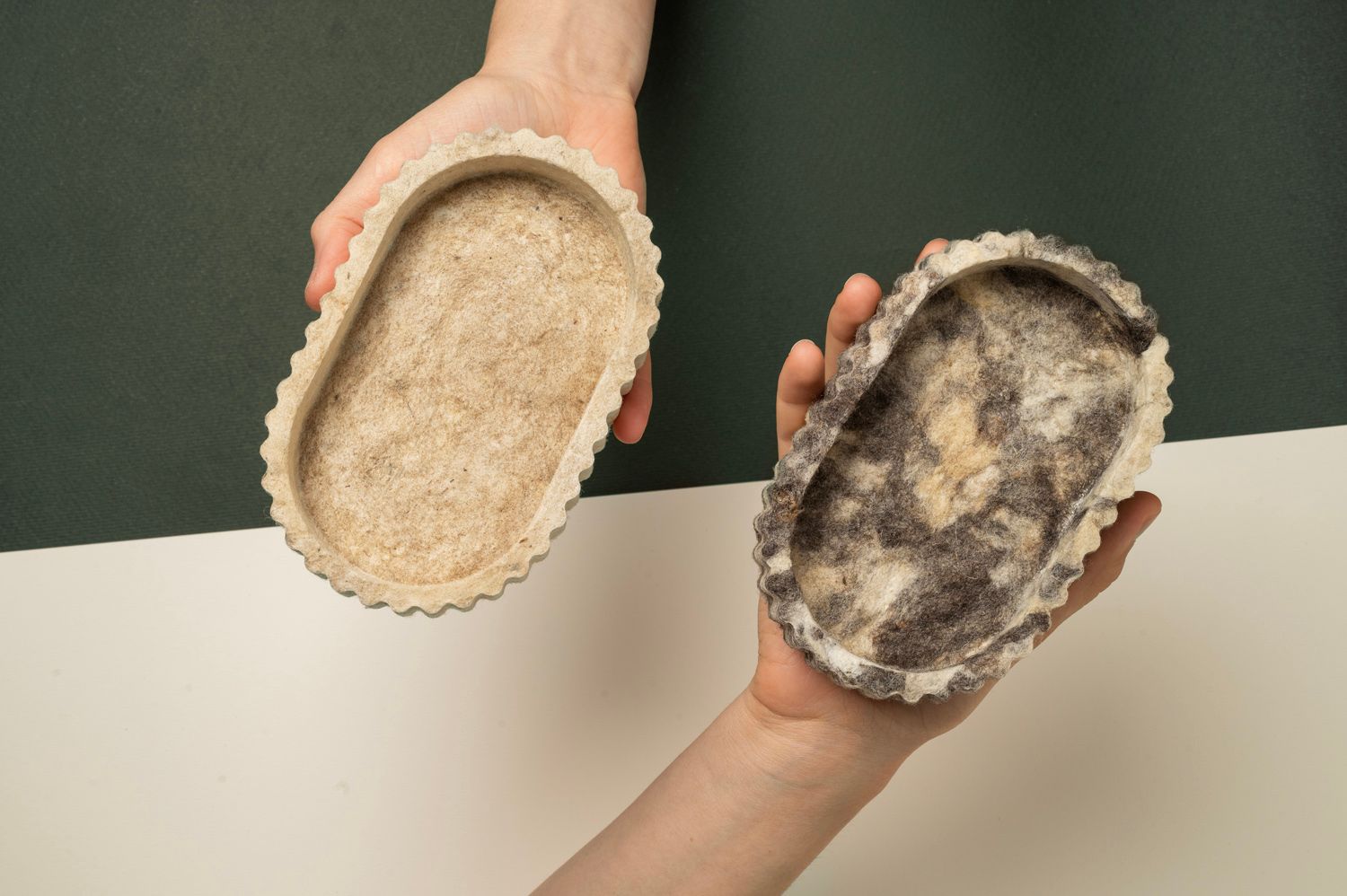Every year in Hungary, several tonnes of wool, the by-product of lamb sheering are wasted: the aim of the Wool project is to show an alternative way of using this highly valuable material. The special feature of the experimental textile, made from a mixture of waste wool and bioplastic, is that it can be recycled and also that it decomposes in three to four months in composting conditions. The project was recently showcased at Designblok’s diploma section in Prague. We asked textile designer Erzsébet Szabolcs for details!
Erzsébet graduated in textile design at the Moholy-Nagy University of Art and Design. As she says, ever since her teenage years she has been interested in becoming a designer. At that time, she was mostly inspired by the creation of leather accessories, but at the university she specialized in woven fabric design. After her undergraduate studies, she had the opportunity to design textiles with the Jacquard technique at the Design Without Borders exhibition in Budapest: this has opened up a whole new perspective on handloom weaving, as this technology allows for more complex patterns.
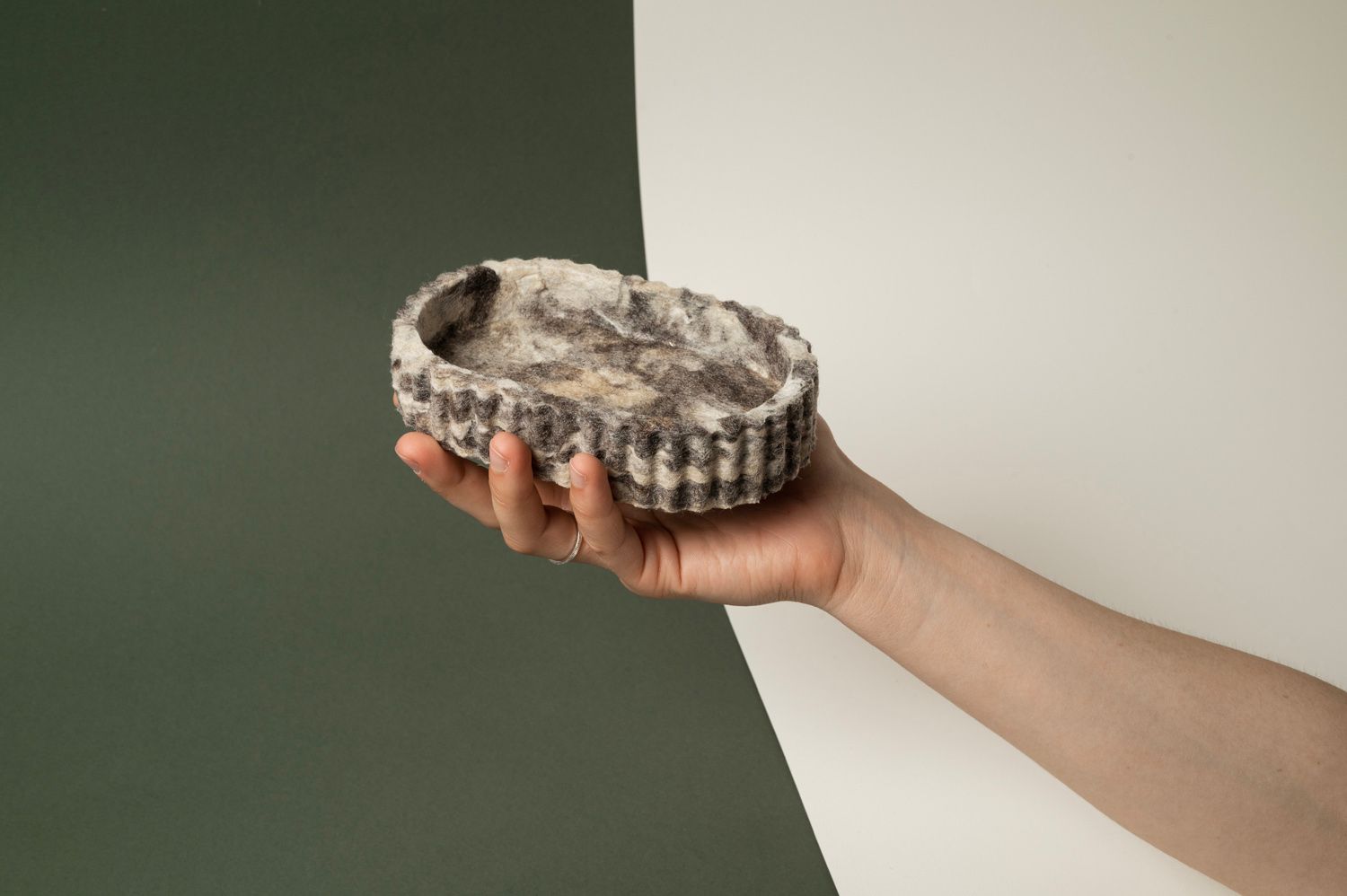
As Erzsébet pointed out, her main interest in textile design beyond aesthetics is to ensure that the use of materials and technology is in line with the function of the textile. “During my undergraduate studies, it was important for me to gain a thorough knowledge of weaving technologies and material science. I found it fascinating to be able to respond to each task by using a new technology or a new type of loom, which had great impact on the whole design process. Experimental textiles became of interest to me later during my Master’s program, which is how I ended up on the frontier of textile design, experimenting with bioplastics,” she explained.
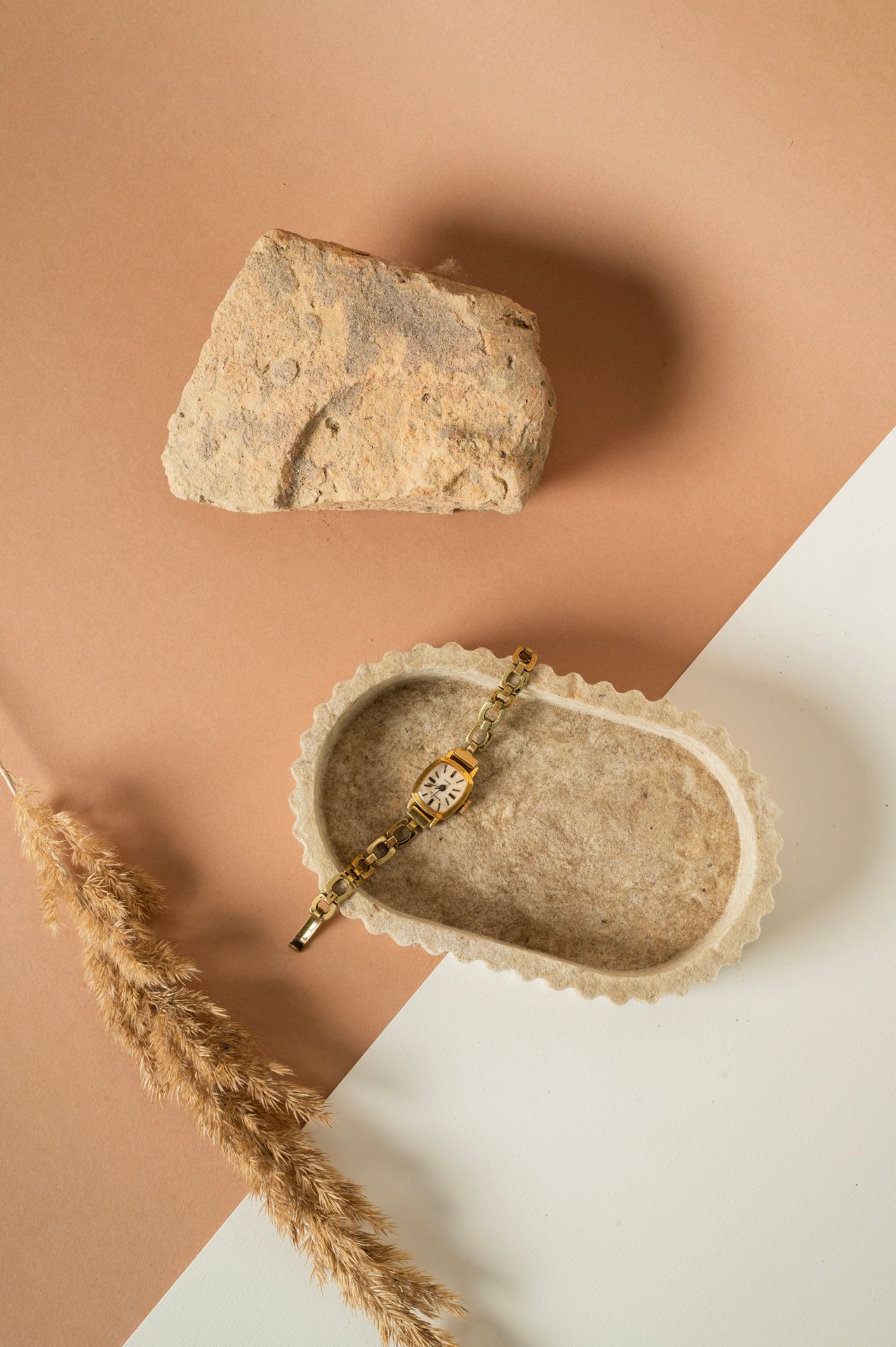
Wool as a raw material started to capture her attention during a semester spent at the Estonian Academy of Arts in Tallinn. “I was strongly influenced by, among other things, textile designer Katrin Kabun’s dedication to wool and her professional expertise. During one of her courses, I started working with the waste wool from the Raasiku yarn factory. The material from the factory was soiled with machine oil and dust, so my first experiment was to see if I could mask the contamination by combining the wool with a bioplastic, creating a new material. The experiment was partially successful, so I decided it was worthwhile to continue this material research process. I finished the course by designing a bag with all the parts, including the closure, made from the experimental material,” she notes.
With these experiences behind her, she slowly began to develop the idea for her thesis, the Wool project: after her experiments in Tallinn, the designer became interested in what happens to the wool produced in Hungary.
“It soon became clear to me that, in the absence of a wool processing industry, several tonnes of wool are wasted every year in Hungary: all that is produced during the annual sheep shearing process is usually buried or burnt. One exception is the farm in Balástya, where the unprocessed wool is collected in huge bags in the hope that someone will make use of it. The main aim of my thesis was to show an alternative method of using this diverse raw material without an industrial environment,” she continued.
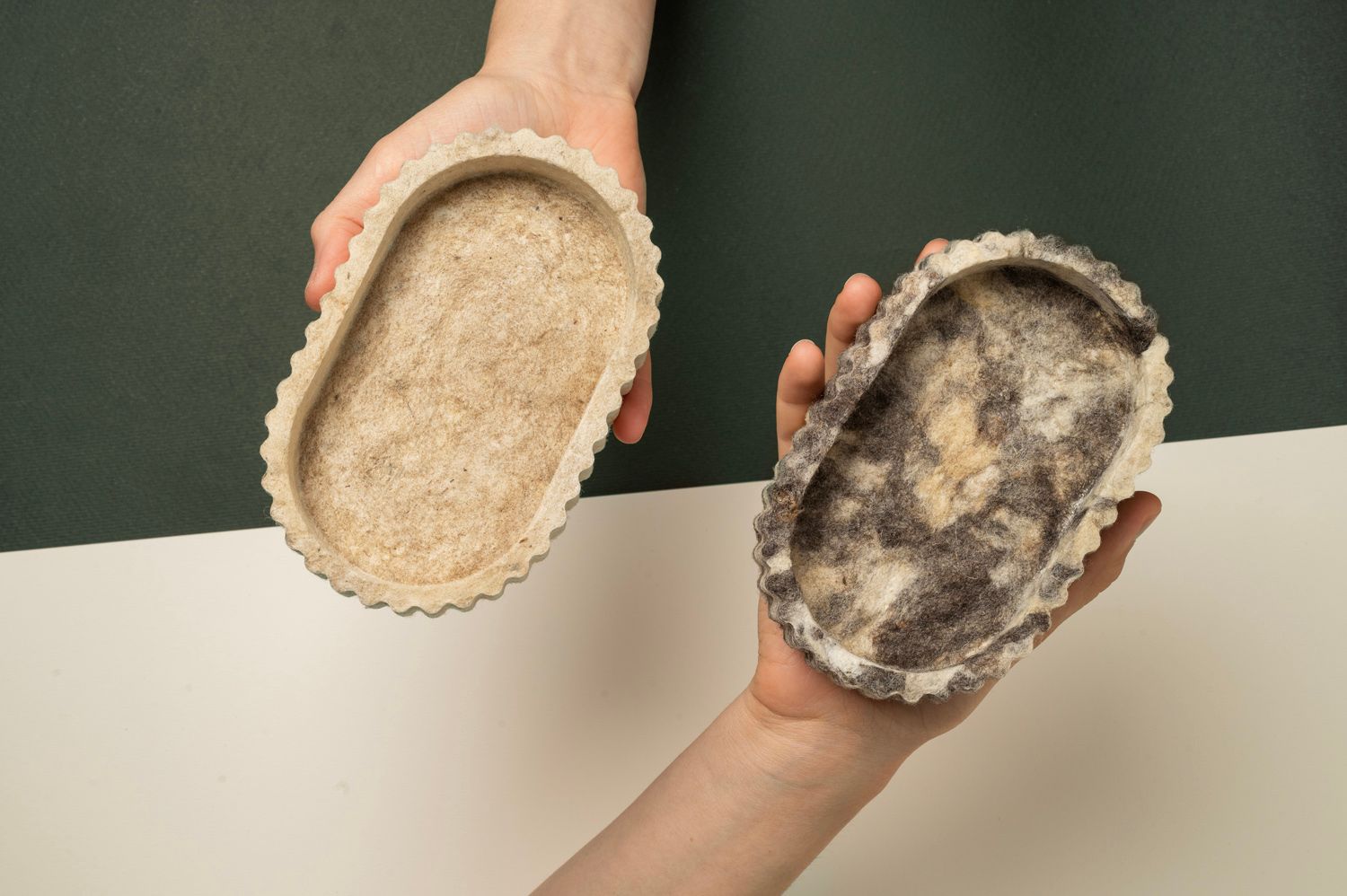
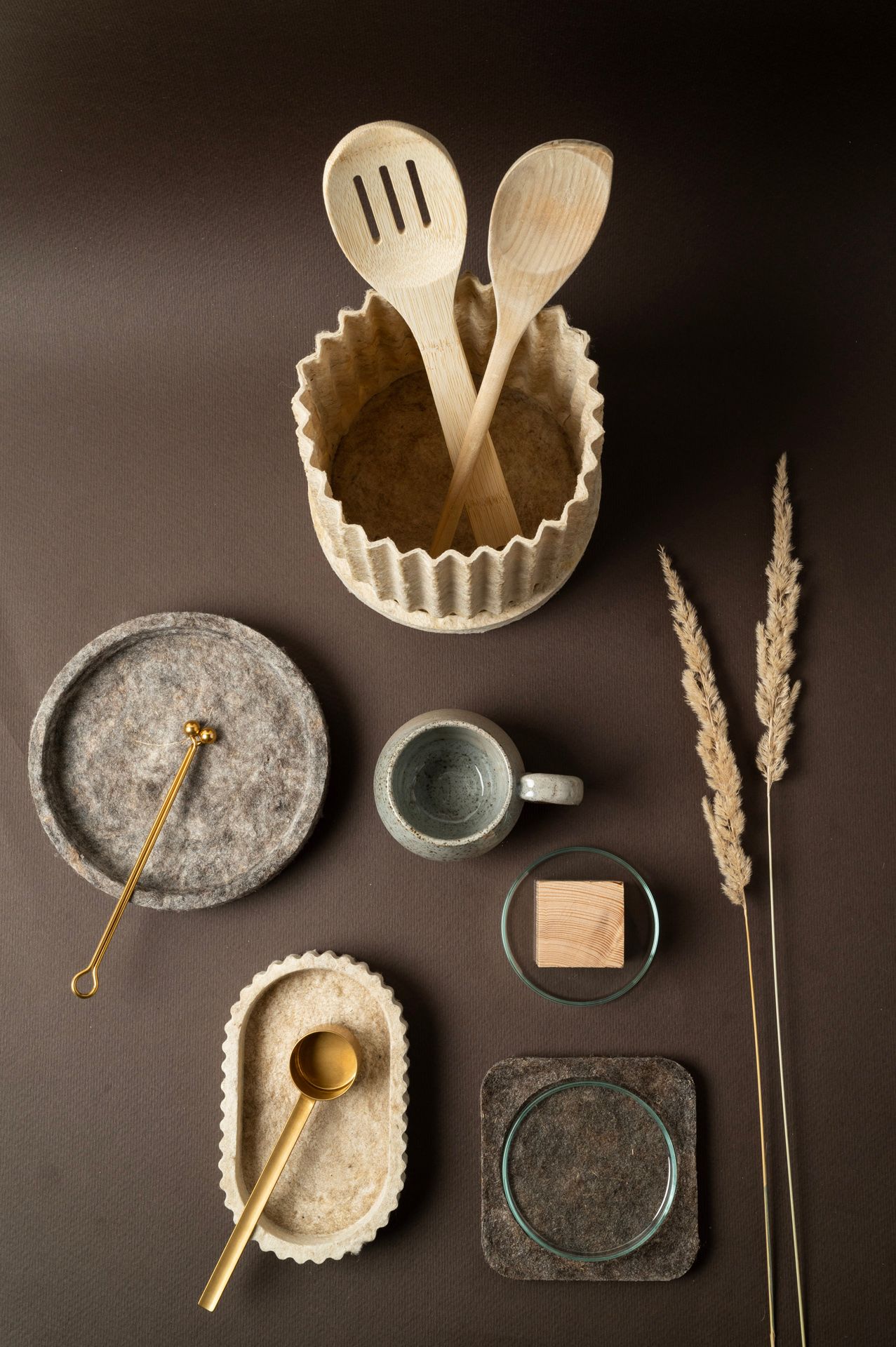
So Erzsébet immersed herself once again in raw material development, which started with the cleaning of wool. According to the designer, this was also one of the project’s biggest challenges. After extensive research, she finally succeeded in cleaning the wool, which was full of excrement, soil, and plant parts, using a special fermentation process. “The advantage of this process is that it requires less water and fewer chemicals than the industrial processes,” she added. The next step after the cleaning process was the development of a composite material made from a mixture of gelatine-based biopolymer and wool. “I chose gelatine over other plant-based biopolymers because both wool and gelatine are by-products of the meat industry, so I could work with locally available raw materials,” she explained.
Finally, to produce a material with the right hardness and structure, the designer also devised special pressing tools—which yielded a material with a thickness of 20-25 mm and a structure similar to corrugated cardboard. As Erzsébet explained, it took several iterations to find the right material for these dies. In developing the final composite material, she also experimented with plant-based dyes, but ultimately decided that she wanted to preserve the wool’s natural colors.

To illustrate the properties of the final material, Erzsébet considered creating several types of objects, including partitioning systems, packaging, or various children’s toys. Finally, considering the feasibility of the project, she decided on a group of small containers, which she envisaged primarily for office use. Erzsébet also revealed that she would like to continue developing this special material with the help of experts from other fields, and would also like to work on waterproofing this composite material.
Erzsébet Szabolcs | Instagram

The biggest Baltic security conference is about to start!

Where to invest during an economic crisis?










